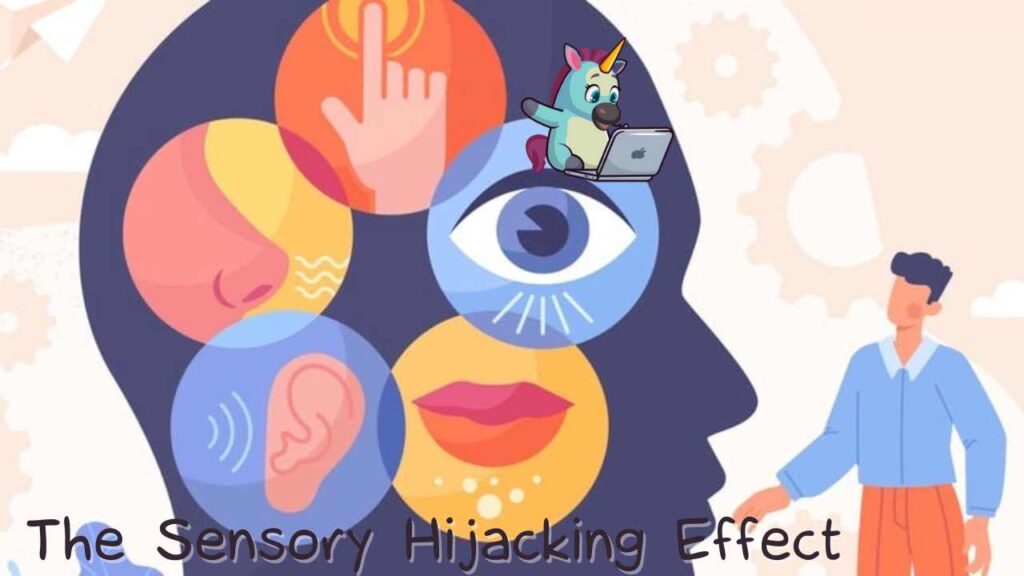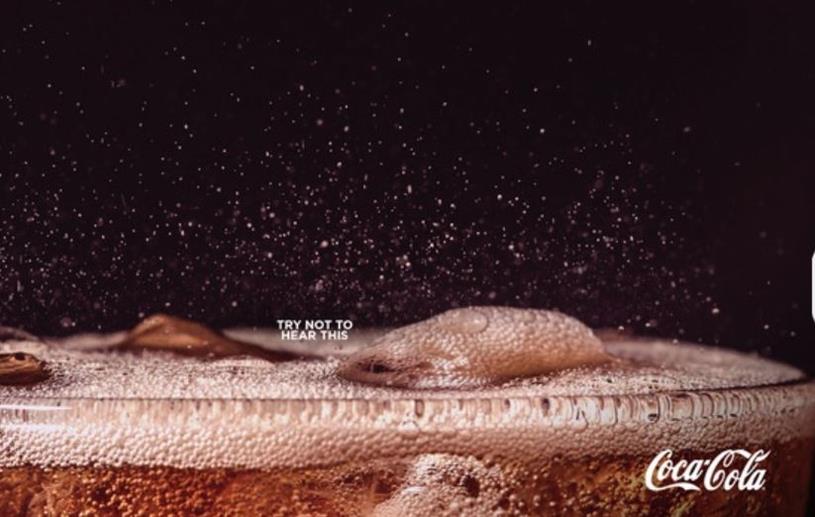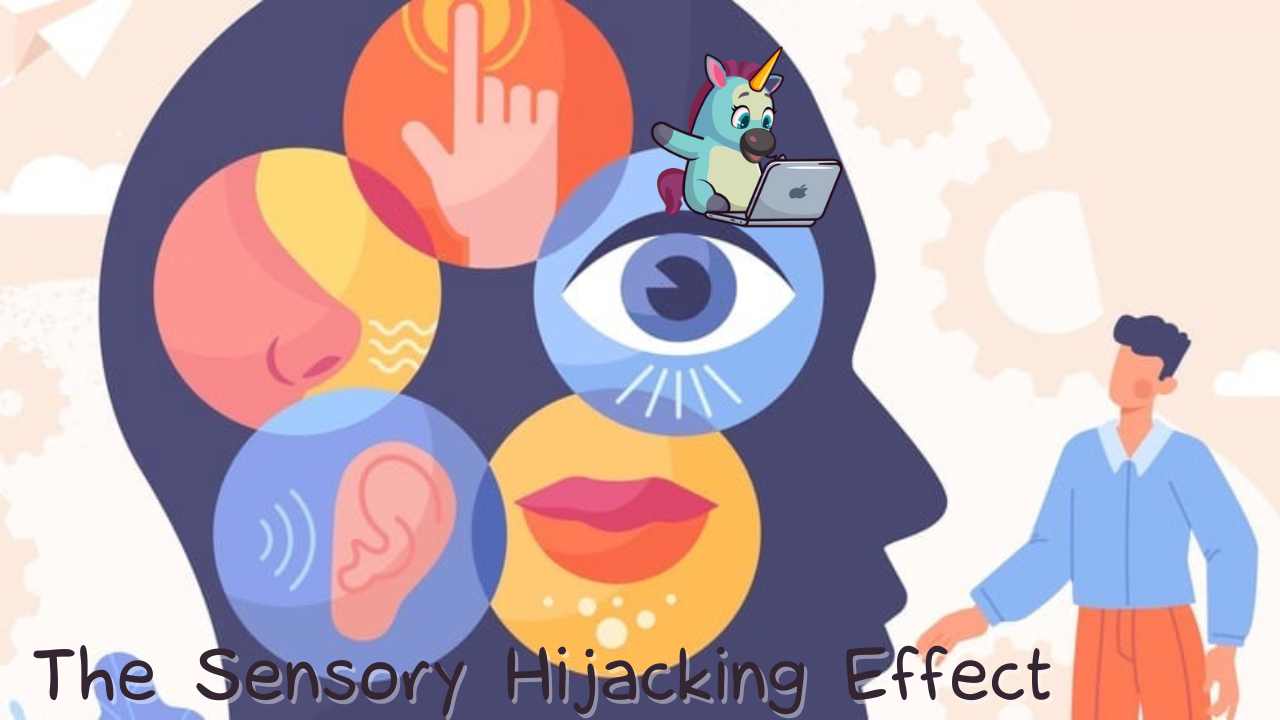
Have you ever been scrolling through your social media feed or watching your favorite TV show and suddenly seen a video ad for a steaming cup of coffee or a cold soda?
As you stare at the screen, you can almost taste the refreshing fizz or feel the warmth spreading through your hands.
But wait a minute…
There’s no actual coffee warmth or soda fizz coming from your phone.
So why did your brain react as if there was?
Enter the Sensory Hijacking Effect.
This psychological principle suggests that by strategically using sensory cues, marketers and brands can trigger associated sensations in consumers’ minds, creating a more immersive and compelling brand experience.
It’s like our brains are saying, “If I see it, I can practically smell, hear, or taste it!“
🧠 The Psychology of Sensory Hijacking

So, what’s the mental trick behind the Sensory Hijacking Effect?
It all boils down to a cognitive phenomenon called associative synesthesia.
When we experience familiar sensory information, our brains automatically fill in the blanks with expected sensations from other senses.
If we see an image of sizzling bacon, our minds conjure up the sound of it crackling in the pan and the savory smell floating through the air.
The Sensory Hijacking Effect exploits this psychological tendency by strategically presenting sensory cues to evoke multi-sensory experiences in consumers’ minds.
⚖️ The Good, the Bad, and the Sensory Hijack

While the Sensory Hijacking Effect can be a powerful tool for creating immersive brand experiences, it’s not without its considerations:
On the positive side, a well-executed sensory hijacking strategy can:
– Create a more engaging and memorable brand experience
– Trigger emotional responses and cravings related to the product
– Differentiate a brand in a crowded marketplace
However, there are also potential downsides to consider:
– Overuse of sensory cues can lead to sensory overload and consumer fatigue
– If poorly executed, it may come across as gimmicky or manipulative
– Cultural differences in sensory associations may limit global applicability
🚨 The Effects of Sensory Hijacking in Digital Marketing

In the world of digital marketing, sensory hijacking can have significant impacts:
Improved Engagement: By evoking multiple senses, digital ads can grab and hold attention more effectively in a crowded online space.
Increased Memorability: Multi-sensory experiences are more likely to be remembered, improving brand recall and recognition.
Emotional Connection: Triggering associated sensations can create stronger emotional ties to a brand or product.
Conversion Boost: By stimulating desires or positive sensory experiences, sensory hijacking can drive more immediate action and conversions.
🐐 Sensory Hijacking Hall of Fame GOATs
Check out these brands that have mastered the art of evoking multi-sensory experiences through visual cues:
🥤 Coca-Cola

Coca-Cola’s ads often feature the sound of a can opening or the fizz of the drink being poured. Even in silent visual ads, these images can trigger the associated sounds in viewers’ minds, creating a more immersive experience.
🍩 Cinnabon

Cinnabon strategically places ovens near the front of their stores, wafting the scent of fresh cinnamon rolls. Their visual marketing often features close-ups of gooey, warm rolls that can practically make you smell and taste them through the screen.
🥔 Lays Potato Chips

Lays’ “betcha can’t eat just one” campaign leverages the crisp sound of biting into a chip.
Their visual ads often show chips being crunched, triggering the associated sound and texture in viewers’ minds.
By studying these examples, understanding the psychology behind the Sensory Hijacking Effect, and considering the potential pitfalls, you can develop a balanced marketing strategy that creates immersive, multi-sensory experiences while respecting consumer boundaries.
Just remember: in the game of sensory hijacking, it’s all about finding the sweet spot between engagement and overwhelm!


Leave a Reply